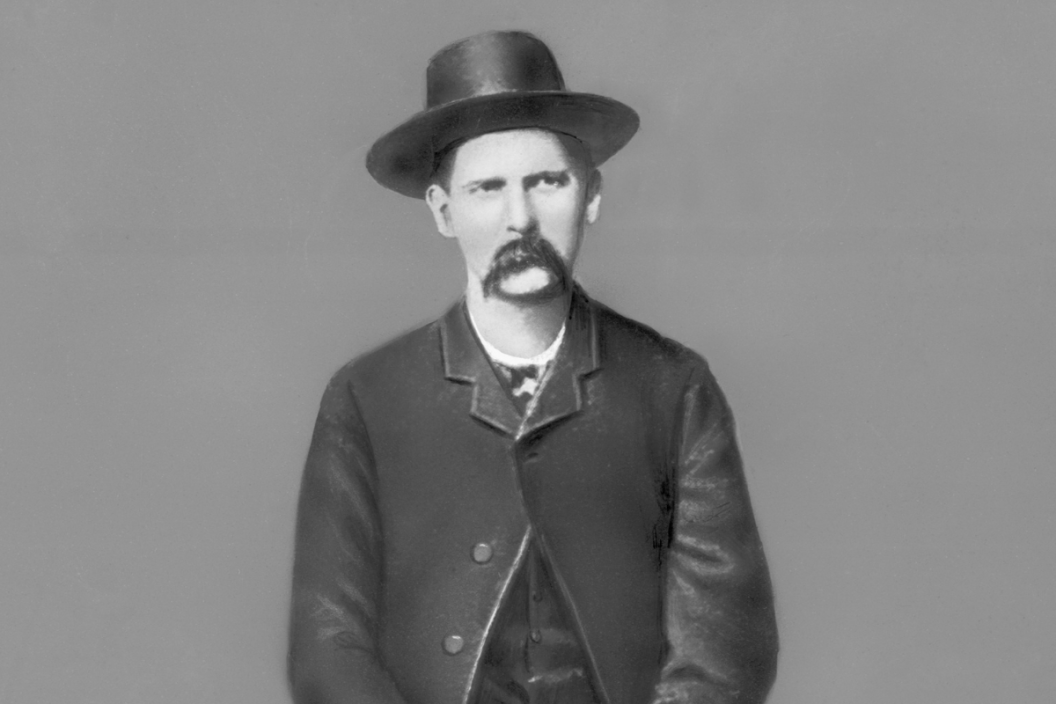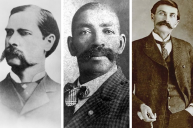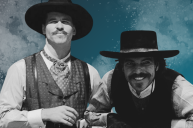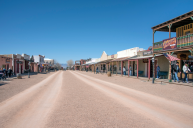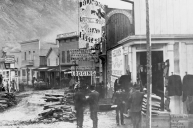Before Wyatt Earp became a permanent fixture in cowboy lore, he was a real police officer and deputy sheriff at the turn of the century, protecting citizens from troublemaking outlaws in the days of the Wild West. The legendary life of this frontier lawman has made him an American icon, still a household name nearly a century after his death.
The Real Wyatt Earp
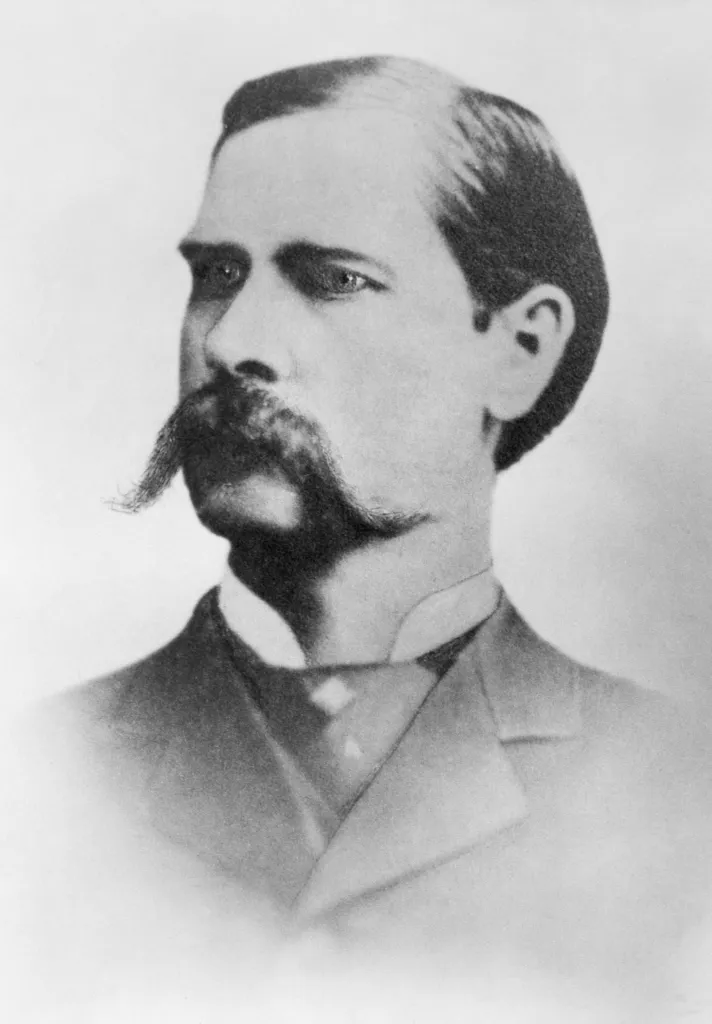
Portrait of Marshall Wyatt Earp. Photograph, 1886. Via Getty Images
Wyatt Berry Stapp Earp was born in 1848, named in honor of his father's commanding officer in the Mexican-American War. It is believed that he was born in Monmouth, Illinois before his father, Nicholas Earp, moved the family out to Iowa, California, and later Missouri. It was in Missouri that a young Wyatt Earp fell for a young woman named Urilla Sutherland. The couple married in January of 1870 but Urilla tragically died later that year from typhoid fever.
The death of his wife didn't sit well for Earp. He had a slew of legal issues over the next few years, getting arrested, affiliated with brothels and prostitution. It's speculated that he was either a pimp or the bouncer of a brothel. After moving with his brother James to Wichita, Kansas, he briefly served as the town deputy before moving to Dodge City, Kansas, which known as the "Wickedest Little City in the West." He served as an assistant marshal in the small cattle trading town but spent his time during the offseason gambling in Texas and New Mexico. It was actually through his gambling that he met Doc Holliday. Throughout the 1870s, the two men traveled together, visiting gambling houses throughout the Old West before Earp's brother Virgil Earp, told him about an opportunity for police work in the mining town of Tombstone, Arizona.
It was during his time in the Arizona territory that the Earp brothers famously fought the outlaw cowboys. This was also the site of the gunfight at the O.K. Corral, now a legendary tale. Joined by Holliday and his brothers Virgil and Morgan Earp, a shootout ensued with outlaws Billy and Ike Clanton and Tom and Frank McLaury. It's unknown who shot first, but the gunfight ended with the deaths of Billy, Frank and Tom. Nearly their entire posse gone in 30 seconds.
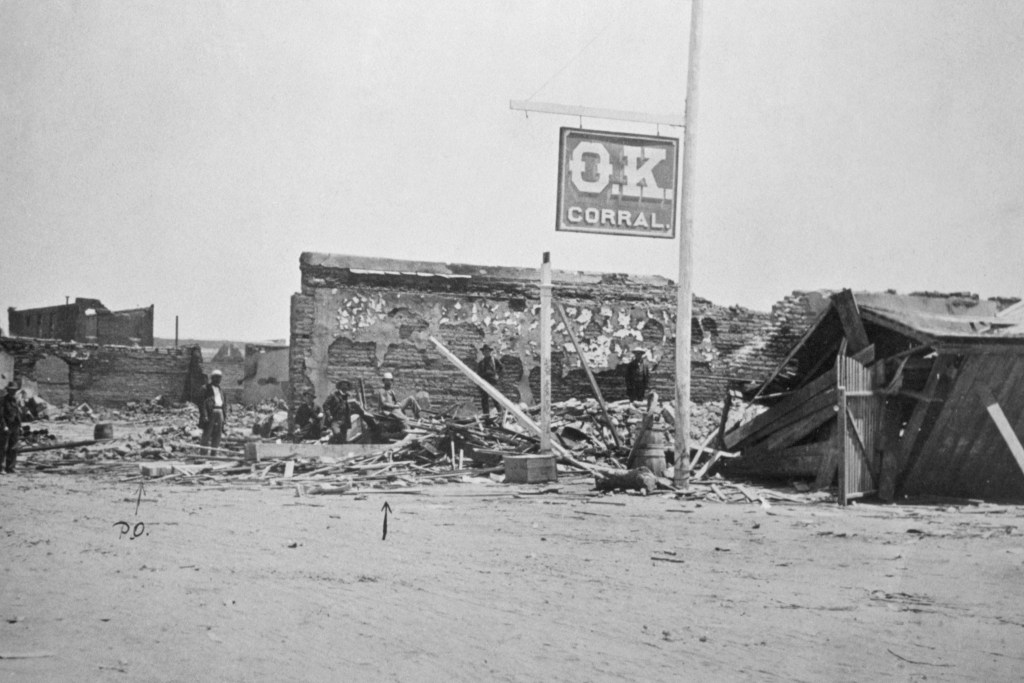
Wyatt Earp at the ruins of the OK Coral in his hometown of Tombstone, Arizona. (Photo by John van Hasselt/Sygma via Getty Images)
Though the Earp brothers and Holliday were convicted for the murders of the three men, the charges were later dropped. Earp, joined by his female companion Josephine Marcus (nicknamed Sadie), traveled to Colorado, San Francisco and Alaska during the Gold Rush before eventually settling down in Los Angeles.
Wyatt Earp and Hollywood
When Earp and Sadie moved to Los Angeles, he was able to make some connections in the film industry. He acted as a consultant (unpaid) on some of the earliest western silent films, becoming friends with two of the biggest cowboy stars of the time — William Hart and Tom Mix. They even served as pallbearers at Earp's funeral. Earp was a regular on John Ford's sets, one of the biggest western directors of all time — Stagecoach, The Searchers, and The Man Who Shot Liberty Valance. All Ford.
Did John Wayne Meet Wyatt Earp?
It was rumored that John Wayne met Earp when he was consulting on one of his films. According to American Cowboy, the two never did meet, but Wayne heard some of the stories that Earp would recount on sets about his time in the American West. He was particularly influenced by "the code" that he lived by, being a man of honor, and only using his weapon as a last resort. A code that he used at the O.K. Corral, trying to convince the outlaws to surrender before resorting to his gun.
That lesson stuck with Wayne throughout his career. He even changed the script when working on The Shootist in 1975, telling his director that he didn't want his character to shoot someone in the back. Looking back at Wayne's incredible film catalog, it's clear that all of his characters are driven by a particular moral code. Earp would have been proud.
Wyatt Earp in pop culture
Even after Earp passed way in 1929, his name lived on, in large part thanks to his biography that was published in 1931, Wyatt Earp: Frontier Marshal. He was a respected town marshal and word spread of his skills as a gunfighter. He became known as one of the deadliest gunmen of his time. Earp was the perfect picture for a Wild West character in films.
Wild Bill Hickok was the first film to bring Earp to the screen. The 1923 film starred his friend William Hart in the titular role with Bert Lindley played Earp. A few more films followed before John Ford released his own story of Earp in 1946, My Darling Clementine, with Henry Fonda starring as Earp. Other actors who have played Earp over the years include Burt Lancaster, James Garner, Harris Yulin, Kurt Russell, Kevin Costner and Val Kilmer. Hugh O'Brian also starred as Earp in the television series, The Life and Legend of Wyatt Earp in the '50s.
His memorabilia has also become quite valuable over the years. His signature on an 1870 Lamar, Missouri subpoena was sold for a whopping $14,937.50 in 2010.
READ MORE: The 20 Best Western Movies of the Last 20 Years
